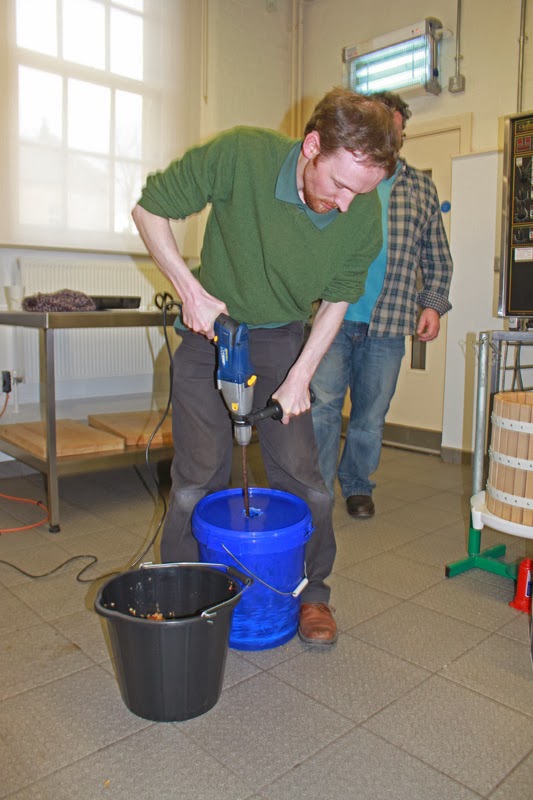Homebrew Kit
March 2014
I was given a Milestone Dark Galleon beer kit for Christmas and have come to the conclusion that my interest in home brew is a Godsend for my relations. At £25 a top end kit is just the right price for a gift and when I have woven my brewing magic on it they get to enjoy the end result too. A true win win if ever there was one.
My last batch was Woodforde's Nog, which I brewed in the pressure barrel as recommended by Barry on the the Homebrew Boat. I had had a couple of spoiled beers recently due to oxidisation so I decided to avoid all contact with air and repeat the process.
The account of the Nog batch can be read here.
The snag with barrel fermentation in the first attempt was the volume of foam / head during the first few days of fermentation which overwhelmed the barrel and came oozing out over the tom like a 1950's horror movie. To prevent this I will start it off off in a vat and then transfer to a CO2 filled barrel after a couple of days.
I will let you know how I get on.
Update 11.5.14
With the barrel mature we have been supping the end result. A very full bodied and smooth beer with a hoppy taste. It may be my brewing but there is slight metallic after taste, very distant but discernible none the less which which reduces it to good rather than excellent.
The brewing in a pressure barrel seems to be working well.
Final update 6.7.14
We drank the finals couple of pints of Dark Galleon today, two months after kegging and I would say that the last litres were increasingly yeasty. By no means undrinkable but certainly past the best. All in all its a lot easier having a beer on tap than fiddling with bottles.
I had to get rid of the lest of Dark Galleon because my next batch - American IPA has been fermenting for six days and is ready for the barrel.
Update 11.5.14
With the barrel mature we have been supping the end result. A very full bodied and smooth beer with a hoppy taste. It may be my brewing but there is slight metallic after taste, very distant but discernible none the less which which reduces it to good rather than excellent.
The brewing in a pressure barrel seems to be working well.
Final update 6.7.14
We drank the finals couple of pints of Dark Galleon today, two months after kegging and I would say that the last litres were increasingly yeasty. By no means undrinkable but certainly past the best. All in all its a lot easier having a beer on tap than fiddling with bottles.
I had to get rid of the lest of Dark Galleon because my next batch - American IPA has been fermenting for six days and is ready for the barrel.


































